KẾT QUẢ PHẪU THUẬT TẠO HÌNH KHUYẾT SỌ BẰNG XƯƠNG SỌ TỰ THÂN TẠI BỆNH VIỆN TRUNG ƯƠNG THÁI NGUYÊN
Nội dung chính của bài viết
Tóm tắt
Mục tiêu: Đánh giá kết quả phẫu thuật tạo hình khuyết sọ bằng xương sọ tự thân tại bệnh viện Trung ương Thái Nguyên. Đối tượng: 97 bệnh nhân phù hợp tiêu chuẩn lựa chọn được phẫu thuật tại Bệnh viện Trung ương Thái Nguyên từ tháng 01/2022 đến tháng 06/2024. Phương pháp: Nghiên cứu mô tả. Kết quả: Trong số 97 bệnh nhân được phẫu thuật, kết quả tốt chiếm 91,7%, kết quả xấu chiếm 8,3%. Tỷ lệ biến chứng là 26,80%, phổ biến nhất là nhiễm trùng (9,3%), động kinh (7,2%) và tiêu xương (4,1%). Kết luận: Kết quả không cho thấy sự khác biệt có ý nghĩa thống kê về tỷ lệ biến chứng giữa các nhóm tuổi, giới tính, bệnh lý kèm theo, thời gian phẫu thuật, và vị trí ghép. Tuy nhiên, tỷ lệ biến chứng tăng cao hơn ở các trường hợp có thời gian phẫu thuật kéo dài. Nghiên cứu này nhấn mạnh tầm quan trọng của việc quản lý các yếu tố nguy cơ để giảm thiểu biến chứng sau phẫu thuật.
Chi tiết bài viết
Từ khóa
Phẫu thuật tạo hình khuyết sọ, xương sọ tự thân, biến chứng sau phẫu thuật, nhiễm trùng, động kinh, tiêu xương
Tài liệu tham khảo
2. Pfnür A, Tosin D, Petkov M, Sharon O, Mayer B, Wirtz CR, et al. Exploring complications following cranioplasty after decompressive hemicraniectomy: A retrospective bicenter assessment of autologous, PMMA and CAD implants. Neurosurgical Review. 2024; 47(1):72.
3. Raju D, Bhosle R, Patel S, Bhattacharyya A, Aditya G, Krishnan P. Complications after Cranioplasty: A Pictorial Narrative with Techniques to Manage and Avoid the Same. Indian Journal of Neurotrauma. 2023;20.
4. Schuss P, Vatter H, Oszvald A, Marquardt G, Imöhl L, Seifert V, Güresir E. Bone flap resorption: risk factors for the development of a long-term complication following cranioplasty after decompressive craniectomy. J Neurotrauma. 2013;30(2):91-95.
5. Dünisch P, Walter J, Sakr Y, Kalff R, Waschke A, Ewald C. Risk factors of aseptic bone resorption: a study after autologous bone flap reinsertion due to decompressive craniotomy. Journal of neurosurgery. 2013;118(5):1141-1147.
6. Sundseth J, Sundseth A, Berg-Johnsen J, Sorteberg W, Lindegaard KF. Cranioplasty with autologous cryopreserved bone after decompressive craniectomy: complications and risk factors for developing surgical site infection. Acta neurochirurgica.2014;156(4):805-811;discussion 811.
7. Hall WA. Cranioplasty infections--adding insult to injury. World neurosurgery. 2014;82(3-4):e435-437.
8. Still M, Kane A, Roux A, Zanello M, Dezamis E, Parraga E, et al. Independent Factors Affecting Postoperative Complication Rates After Custom-Made Porous Hydroxyapatite Cranioplasty: A Single-Center Review of 109 Cases. World Neurosurg. 2018;114:e1232-e1244.
9. Chowdhury SKR, Kumar A, Kumar P. A Retrospective Study of Complications in Cranioplasty: 7-Year Period. J Maxillofac Oral Surg. 2021;20(4):558-565.
10. Henry J, Amoo M, Taylor J, O'Brien DP. Complications of Cranioplasty in Relation to Material: Systematic Review, Network Meta-Analysis and Meta-Regression. Neurosurgery. 2021;89(3):383-394.


